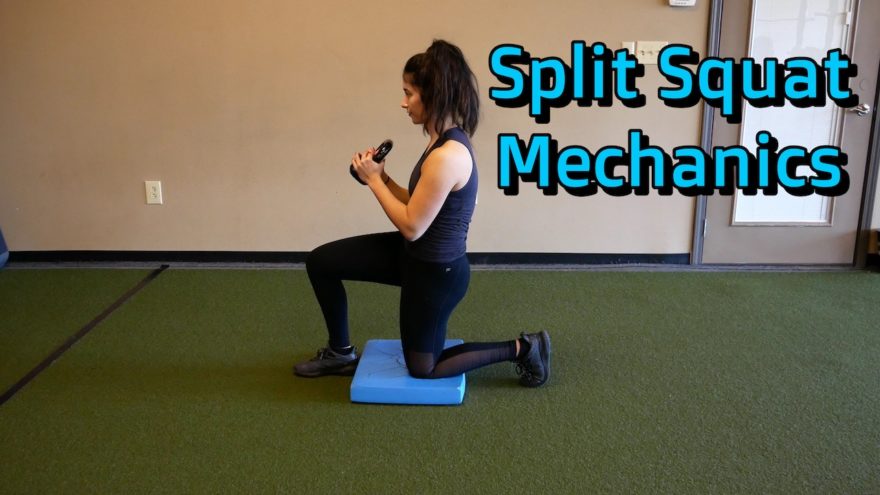A complete guide to split squat biomechanics
The split squat is incredibly versatile, but how can I most effectively use it to drive the range of motions I need. Or why in the heck is my person compensating in that way when they do the split squat?
We will answer that with this post, as the split squat can vary its rotational qualities depending on factors such as depth, arm positioning, and more!
If you are ready to absolutely crush all things split squat, then check out Movement Debrief Episode 152 below to find out!
Watch the video below for your viewing pleasure.
Or listen to my sultry voice on the podcast version:
If you want to watch these live, add me on Instagram.
Table of Contents
Show notes
Check out Human Matrix promo video below:
Below are some testimonials for the class:
Want to sign up? Click on the following locations below:
May 29th-30th, 2021 Boston, MA (Early bird ends May 7th at 11:55 pm!)
August 14th-15th, 2021, Ann Arbor, MI (Early bird ends July 18th at 11:55 pm!)
September 25th-26th, 2021, Wyckoff, NJ (Early bird ends August 22nd at 11:55 pm)
October 23rd-24th, Philadelphia, PA (Early bird ends September 26th at 11:55pm)
November 6th-7th, 2021, Charlotte, NC (Early bird ends October 3rd at 11:55 pm)
November 20th-21st, 2021 – Colorado Springs, CO (Early bird ends October 22nd at 11:55 pm)
Or check out this little teaser for Human Matrix home study. Best part is if you attend the live course you’ll get this bad boy for free! (Release date not known yet 🙁
Here is a signup for my newsletter to get nearly 5 hours and 50 pages of content, access to my free breathing and body mechanics course, a free acute:chronic workload calculator, basketball conditioning program, podcasts, and weekend learning goodies: [yikes-mailchimp form=”1″ submit=”Get learning goodies and more”]
Hand and Wrist Rehabilitation – The bible for all things elbow and wrist
Foot Compensation Patterns – This post goes over many of the common foot compensations we may see and what to do about it.
Kinesiology of the hip: a focus on muscular actions – If you want to understand hip biomechanics, getting your hands on this paper is a must.
Trunk Position Influences the Kinematics, Kinetics, and Muscle Activity of the Lead Lower Extremity During the Forward Lunge Exercise – This article outlines how altering trunk position can influence muscle activity as the split squat occurs.
Pelvic and femoral split squat mechanics
Question: During Split squat which mechanics can be observed? Nutation on the front leg? Counternutation back leg?
Answer: It depends on what we are talking about respective to the point in the split squat. So, fam, let’s dive into the various aspects of the split squat.
For all positions, let’s assume we are talking about a split squat with the left leg in front.
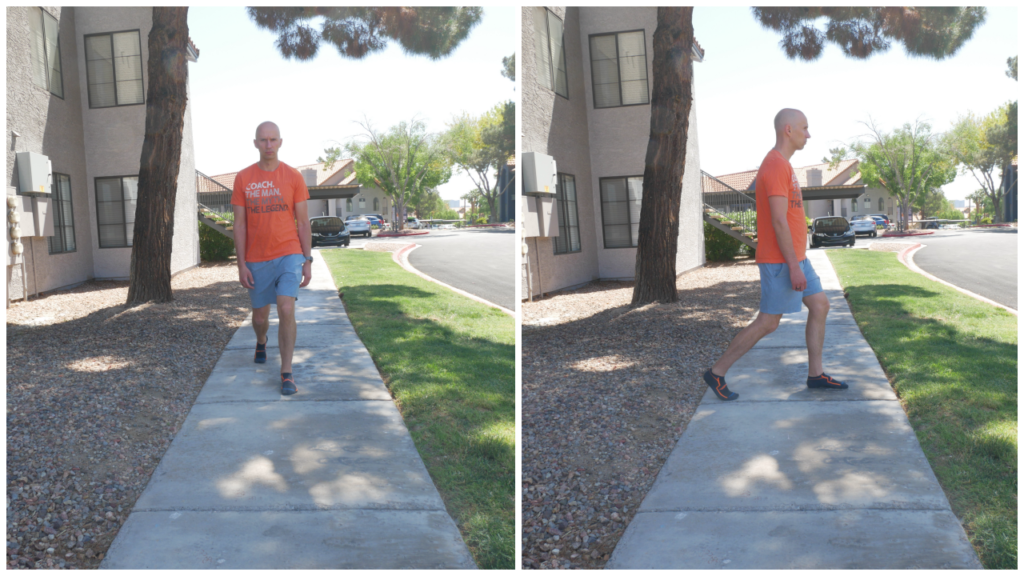
Split squat start position
At the start, the sacrum is right facing, but beginning to turn to the left.
Based on the relative rotation that occurs throughout the movement of flexion, the front leg will have a relative external rotation bias. This bias is due to the top leg being at around 20-30 degrees of hip flexion.
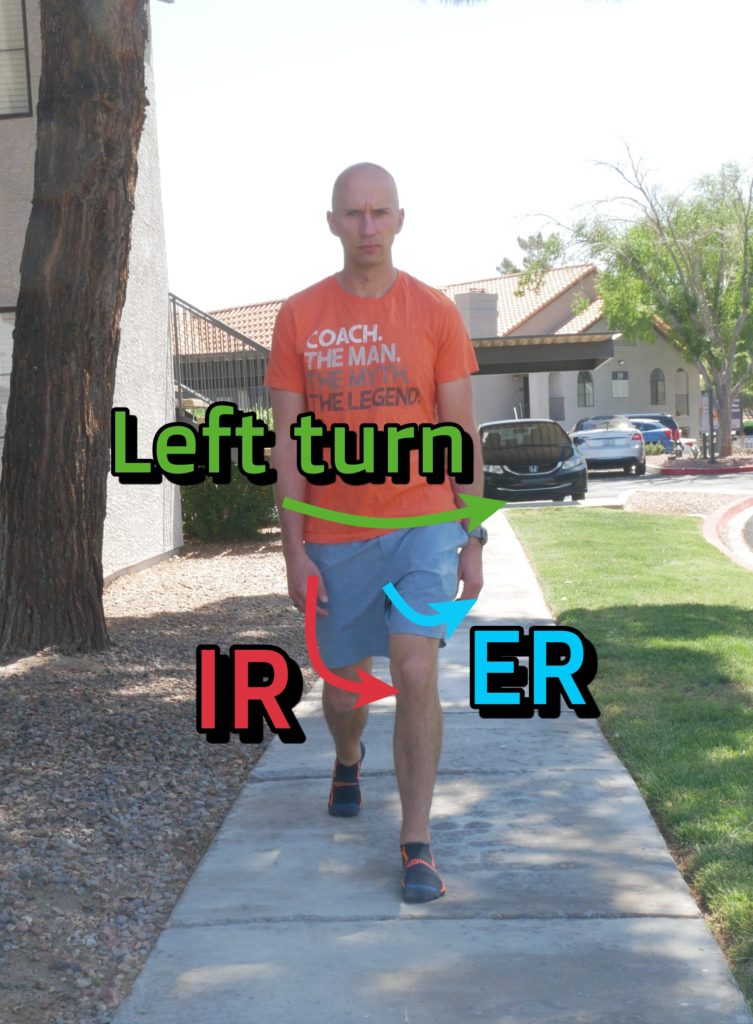
The back leg will have a relative internal rotation bias due to being at around 0 degrees of hip extension.
Split squat descent
As I descend through the squat, the sacrum will progressively turn more and more left, kinda like that one song by Joe but less seductive.
In order for this turn to occur, there will be progressive counternutation on the left side of the sacrum and nutation on the right.
As we move downward, we start to see a shift in the rotational influences of the femurs.
On the front, once the femur passes around 60 degrees of hip flexion, there is a progressive move towards internal rotation.
The back femur, staying at roughly 0 degrees of hip flexion, maintains slight internal rotation bias throughout the course of the movement.
Bottom of the split squat
Once we are at the bottom of the split squat, we’ve officially reached internal rotation city. Congratulations, you are the mayor.
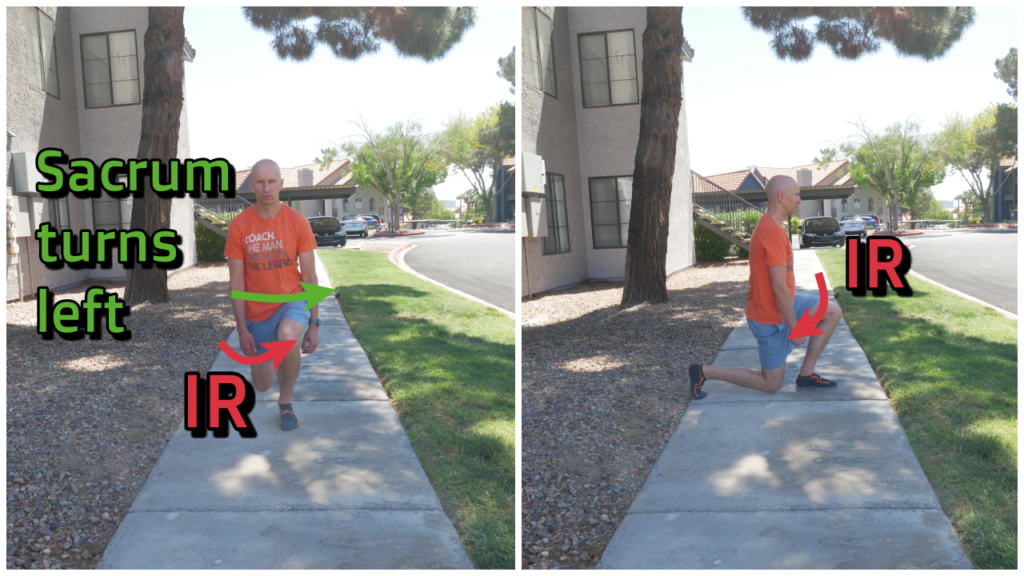
The influence of 90 degrees of hip flexion on the front leg and maintenance of 0 degrees of hip flexion on the right both lends towards internal rotation occurring at the femurs.
Although the sacrum is continually turning to the left, this rotational influence causes the sacrum to perform the act of nutation. That doesn’t mean that the sacrum is nutated, but this is the direction it is moving.
Split Squat ascent
As I push out of the bottom of the split squat, the sacrum rotates back to the “start” position via external rotation of the front leg and maintenance of back leg internal rotation.

How do offset loads influence mechanics?
All of the above points assume that there is no change with load distribution, but what if I hold a weight in one hand. How does that change things?
I’M GLAD YOU ASKED!!!!!!
Think of whatever arm I hold the weight in as creating a reach. Whatever arm I reach with will aid in driving rotation in the opposite direction:
- Ipsilateral load: rotate away from the front leg
- Contralateral load: rotate towards the front leg
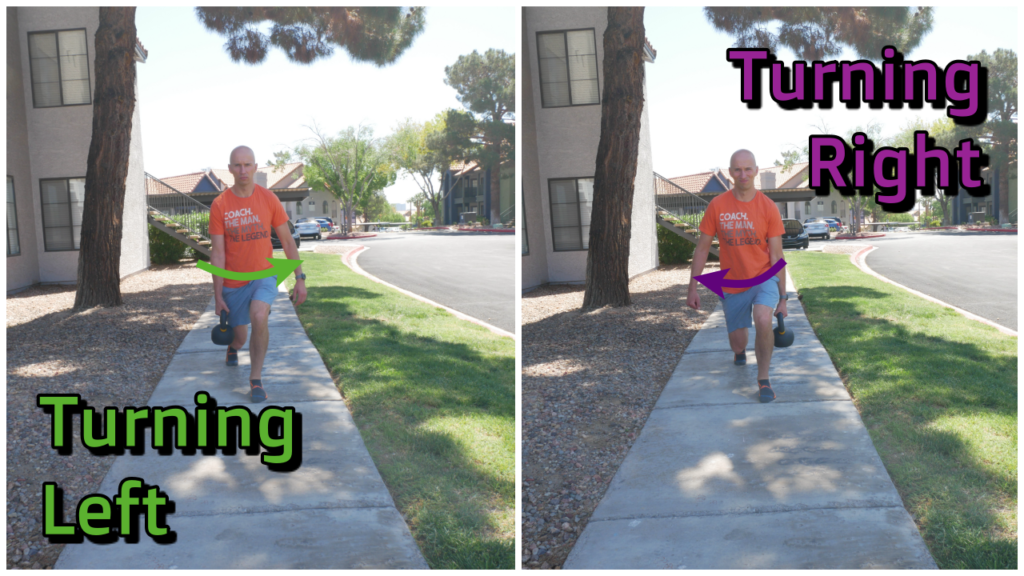
Therefore, an ipsilateral load will limit the sacral rotation towards the front leg, and a contralateral load will increase the sacral rotation towards the front leg.
Femoral, tibial, and foot split squat mechanics
Question: I watched the video of the Front Foot Elevate Split Squat Shift for driving supination/calcaneal inversion. Does this happen as a result of femoral internal rotation –> tibial external rotation –>supination–> calcaneal inversion. Would this line of thinking be correct?
If so, I am having a tough time wrapping my head around the fact that femoral IR (an exhalation measure) would bias supination (an inhalation measure) further down the chain, would it be possible to clarify?
Answer: Your line of thinking is tots mcgoats correct.
The reason why we have alternating actions occurring with the femur, tibia, and foot has to do with the relative motion occurring between the bones as I bend the knee.
There is this concept at the knee joint called the screwhome mechanism. As the knee extends fully, the tibia externally rotates to glide along the condylar grooves. This creates a relative femoral internal rotation.
As the knee unlocks from extension, we see the reverse of this mechanism. The tibia internally rotates, and the femur externally rotates. These actions roughly “cancel” each other out to create what appears to us as a purely sagittal movement at the knee (but it’s not, folks).
According to these two studies (here and here), we actually see these rotational differences throughout the range of knee flexion:
- Knee hyperextension: tibial external rotation & femoral internal rotation
- 0-30 knee flexion: tibial internal rotation & femoral external rotation
- 30-90 knee flexion: tibial external rotation & femoral internal rotation
- 90 to full knee flexion: tibial internal rotation & femoral external rotation
Taking into consideration what is happening as I drop into the bottom of the split squat, we hit roughly 90 degrees of hip flexion and knee flexion. Therefore, we can see that we will be moving toward a tibial external rotation and femoral internal rotation orientation.
Given that tibial external rotation is paired with calcaneal inversion and subsequent supination, we now have a way to link a pairing of inhalation and exhalation orientations.
What doesn’t necessarily change in this orientation is what is going on at the pelvis. There will still be the turn towards the front leg occurring.
One thing we have to be clear on is that although we have biases of specific movements, there are likely inhalation and exhalation actions happening simultaneously everywhere. So too with internal and external rotation. The combination of these movements working together is what provides us several movement options to put our bodies where we need to.
Deep hip flexion in a split squat
Question: Would mechanics change if I can dip below 90 degrees of hip flexion in a split squat?
Answer: As we pass 100 degrees of hip flexion, the femur begins to externally rotate again, and the sacral will turn even further towards the front leg, which will alter the mechanics at the bottom of the split squat to reflect in this fashion. Peep this article to learn more!
Hip shifting in the split squat
Question: Do you consider hip shifting in the lead leg of the split squat more external or internal rotation?
Answer: The rotation driven will depend on the range at which the shift occurs.
Heuristic: Hip shifting will increase the relative rotation in a given direction
Given that higher ranges of hip flexion have more external rotation bias, shifting here will increase external rotation.
If I shift towards the bottom of the split squat, more internal rotation will be driven in the motion.
What direction should the knee move in a split squat?
Question: In the descent of the split squat, do we want to cue the knee to go toward the big toe?
Answer: The midline of the foot is the second toe, so I generally want the knee to go over this position.
To keep it simple, I just cue my supreme clientele to keep the knee centered over the foot.
Lumbopelvic compensation during a split squat
Question: What happens on a split squat if someone throws the front hip in front of the thorax and the pelvis is overtucked?
Answer: The split squat requires relative motions to occur at the various joints of the pelvis to create the motion.
If you can’t create these motions, body regions will begin to move as one unit, and definitely not the cool G-Unit.
A common one you might say is the back hip flexed forward as opposed to going straight down.
When this happens, the pelvis and lumbar spine posteriorly orient as a unit, which flexes both hips forward. This allows me to attain depth while minimizing the sacral turn towards the front leg.
You could also see shifting backwards of the hip, which is essentially the sacrum turning away from the front leg.
What’s more, you could also see a long stance that anteriorly orients the pelvis to create intenral rotation and depth.
In each of these instances, the major key is to keep the stance length shorter, stack, push the front knee forward and the back knee down. One can use a foam roller as a target can help with this latter cue.
Front foot elevated split squats can be good starting points for this:
Split squats for powerlifting?
Question: Split squats for powerlifting?
Answer: Since powerlifting involves restricting motion and increasing tension to some degree, the rotational nature of splits squats can be useful to restore any lost range of motion to reduce the risk of tissue overload.
The difference between front heel elevated and front foot elevated split squats
Question: What are the differences in mechanics between front heel and front foot elevation in a split squat?
Answer: The front foot elevation helps shift weight backwards to reduce front leg loading.
A front heel elevation biases calcaneal inversion, which will drive further external rotation through the leg and sacral counternutation.
Lateral split squat vs regular split squat
Question: What biomechanically changes in a lateral split squat versus a regular split squat?
Answer: A lateral split squat induces more pelvic lateral tilt, whereas a regular split squat provides more pelvic rotation.
A lateral tilt will drive even greater internal rotation bias than your traditional split squats.
Dorsiflexion loss in a split squat
Question: Would a heels elevated split squat be better than squatting for a dorsiflexion loss?
Answer: Anytime you can use rotation and do it savagely well, you. can drive both anterior and posterior expansion. This will generate WAY more motion than bilateral stuff, whcih is why it’s easier for peeps to generate more motion.
Back leg position in a rear-foot elevated split squat
Question: What position do I like for the back foot in a rear foot elevated split squat?
Answer: As I lower into the squat, the back knee is going to be in a relative tibial external rotation and femoral internal rotation position, which will bias calcaneal inversion. Inversion is associated with plantarflexion, which is a good reason to keep the back foot plantarflexed when. you are using this modality.
Sum up
- The split squat starts with an external rotation bias, but progresses towards an internal rotation as we hit the bottom; the sacrum progressively turns towards the front leg
- Ipsilateral loads decrease rotation towards the front leg. Contralateral load increases rotation towards the front leg
- With progressive knee flexion, femoral and tibial movements rotate in opposing directions.
- The deeper the hip flexion in a split squat, the more the sacrum turns towards the front leg.
- Hip shifting magnifies the sacral turning depending on the depth at which it occurs.
- The knee should be centered over the second toe in a split squat.
- Loss of “ideal” motion in the split squat often results in the lumbopelvic complex moving as one unit.
- Lateral split squats create lateral pelvic tilts; regular split squats create pelvic rotation
- Front foot elevation shifts bodyweight posteriorly; heel elevation increases leg external rotation
- The back foot in a rear-foot elevated split squat should be plantarflexed, as this promotes the foot, tibial, and hip position needed throughout the range of motion.

